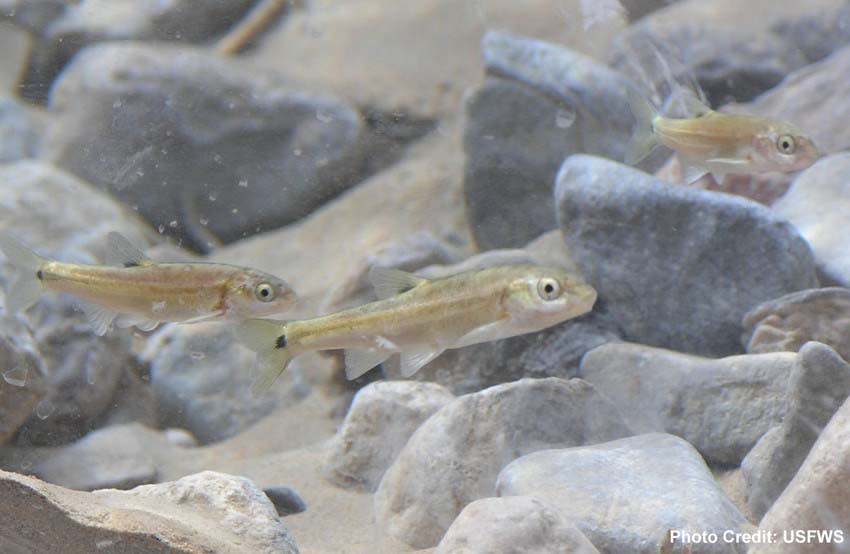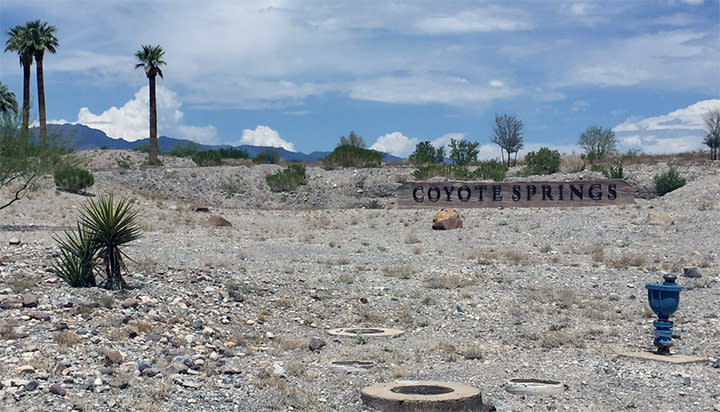Nevada Supreme Court ruling on Coyote Springs puts public interests first for water rights

LAS VEGAS (KLAS) — The Nevada Supreme Court ruled on Thursday that the state engineer acted within his authority in water decisions that stopped development at Coyote Springs, a master-planned community north of Las Vegas envisioned as a home for 250,000 people.
Coyote Springs, about 50 miles away via Interstate 15 and U.S. 93, became a test of how the state could manage water rights in the public interest. A test discovered that several groundwater basins were interconnected, and water for Coyote Springs would mean the water would dry up somewhere else.
2018 COVERAGE: I-Team: Lack of water puts huge housing development in jeopardy
Advocates hailed the decision as a win for wildlife including the endangered Moapa dace, a small fish that lives in habitat created by springs that feed the Muddy River.

“This is a monumental victory for the conservation of water resources in a time of escalating climate change and drought,” said Patrick Donnelly, Great Basin director at the Center for Biological Diversity. “Nevada’s animals are already under stress from the lack of water resources, and our victory will help ensure that industry and developers don’t leave wildlife high and dry.”
Pumping drew down water table, posed threat to Moapa Dace, state finds
The ruling came in an appeal of a District Court ruling, and favored appellants including State Engineer Adam Sullivan, the Southern Nevada Water Authority and Donnelly’s organization.
The initial ruling challenged the state engineer’s decision that the question was bigger than Coyote Springs. The plan for using groundwater for the development led to tests that determined the connections between Coyote Springs Valley, Hidden Valley, Garnet Valley, the Muddy River Springs Area and the Black Mountains Area. Later, Kane Springs Valley was found to be connected, too.
Each of those areas had previously been treated as distinct areas for groundwater. The test changed that.

The combined areas were designated as the Lower White River Flow System, and decisions on groundwater and surface water became a question about how the whole region would be affected. Also, the state engineer determined that only about 8,000 acre feet of water could be withdrawn for the entire region.
And there were requests in for 300,000 acre feet.
The Muddy River is only about 32 miles long, draining into Lake Mead near Overton.

The Nevada Supreme Court decision points out that private water rights cannot take priority over vested water rights that date back more than 100 years. The court remanded the case back to District Court.
Donnelly said the state engineer made the right call.
“We’ve been fighting for this little fish for more than 15 years, and we’re not backing down an inch,” Donnelly said. “We’ll continue to press our case and we won’t rest until we can pound the nails into Coyote Springs’ coffin.”
Plans to continue the development considered a pipeline proposed by the Southern Nevada Water Authority, but that pipeline plan has been abandoned.
Coyote Springs was the dream of lobbyist Harvey Whittemore in the 1990s and grew into a plan to build 150,000 homes, 10 golf courses, and multiple casinos. A golf course designed by Jack Nicklaus continues to operate at the site.
For the latest news, weather, sports, and streaming video, head to KLAS.

